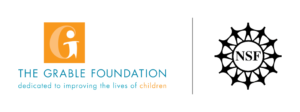Gift the JOY of Play | Unwrap Fun, Learning, & More…

Gift the JOY of Play | Unwrap Fun, Learning, & More…

MONDAY, January 20 – SUNDAY, September 6, 2020

Kids are curious
Ever wonder how a box becomes a box? Or how a sneaker becomes a sneaker? Children do. At How People Make Things, kids learn firsthand about the tools and processes used to make every day objects. It’s just one more way we inspire children to think outside the box.
Every object has a story of how it is made
Children today can feel removed from how common items in their lives are made – their toys, clothes and more. How People Make Things tells the story of how familiar childhood objects are made and how people, ideas, and technology transform raw materials into finished products.
Come in and explore using your hands, real factory tools, and machines to:
CUT MOLD DEFORM ASSEMBLE

This exhibit was inspired by the Mister Rogers’ Factory Tours. Mister Rogers believed that explaining real life to children is important to their development.
Cutting should be very familiar – paper is cut with scissors at school and home. See other ways that cutting can be done with different tools and materials that are frequently involved in the process.
Die Cutter
The die cutter is a machine used to cut the same shape over and over. A piece of material is fed under the die. Then, a crank is turned, pressing the die through the rollers to create the new shape. Cut a pattern of a horse or box that can be folded and taken home!
Cut With Wax
Wax is a very easy material to cut. Different sculpting tools are placed around the wax so you can experience 3-dimensional cutting by hand. After the wax is cut, the shavings are collected and placed into a wax melter. They are reformed into wax blocks for reuse.
Explore hands-on activities as well as industrial machines that show how molded objects are formed. When molding, you learn about state change. State change is when a material is melted into a liquid and then cooled, turning it back into a solid.
Rotational Ball Mold Artifact
This type of mold is used to make large, hollow objects that cannot be made by injection molding. Some common items that are rotationally molded are balls, traffic cones, kayaks, and playground slides.
Match the Mold
Match finished objects with the industrial molds from which they were made.
Mold Filling
This activity shows what happens inside an injection molder. Pull the lever to fill one of six molds with fluid. All of the molds in these displays were once used in factories!
The result of forces like suction, compression (pushing), and torsion (twisting) helps explain how materials can be reshaped. Many of these processes need to be done with machines, but people are needed to run the machines. Although many materials can be deformed, metal, plastic, and wood are used most often.
Deform a Penny
A rolling mill is a machine that flattens metal. Flatten a penny by placing it in one of two rolling mills.
Deform a Wire
A spring is made by bending or deforming a piece of wire into a coil shape. Change a straight wire into a spring shape by winding it around the metal shaft.
Assembling is the part of manufacturing that completes a product before it is ready to use. Explore examples of machines that are used in assembly, things that are assembled, and activities that help explain assembly more thoroughly.
Build-It & Vehicle Assembly
Assemble different parts and pieces to make a vehicle or assemble a structure. Try different designs to test the strength and stability of the structure, or the speed of the vehicle. Any time two or more parts are joined together, they are being assembled.
How People Make Things was created by Children’s Museum of Pittsburgh in collaboration with Family Communications, Inc. (FCI), the producer of Mister Rogers’ Neighborhood, and the University of Pittsburgh Center for Learning in Out-of-School Environments (UPCLOSE).
Supported in part by:
